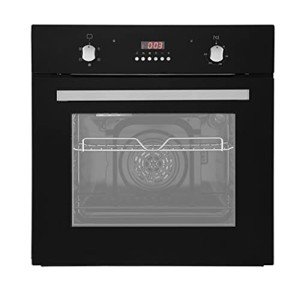The Rise of Integrated Cookers and Hobs: A Comprehensive Guide
In the modern-day kitchen, performance, design, and area optimization are crucial factors to consider for property owners and aspiring chefs alike. One of the most substantial trends in kitchen design is the increasing appeal of integrated cookers and hobs. Ovens And Hobs boost the cooking experience but also elevate the aesthetic appeals of the kitchen area. This short article checks out the qualities, advantages, features, and factors to consider surrounding integrated cookers and hobs, supplying readers with a detailed understanding of their advantages.
What Are Integrated Cookers and Hobs?
Integrated cookers and hobs refer to cooking appliances that are built into the kitchen cabinets, providing a smooth look and maximizing making use of area. Integrated appliances are developed to mix with the aesthetic of the kitchen rather than standing out like standard designs.
Types of Integrated Cookers and Hobs
Usually, integrated cooking appliances include:
- Integrated Hobs: These are cooktops that fit flush into the kitchen counter top. They can be gas, electric, induction, or a combination of these technologies.
- Integrated Ovens: Built directly into the kitchen cabinetry, integrated ovens can come as single, double, or multifunctional designs, using diverse cooking abilities.
- Combination Units: Some designs combine an oven and hob into a single device, providing a compact service for smaller kitchens.
Advantages of Integrated Cookers and Hobs
1. Area Optimization
Integrated cookers and hobs are ideal for little kitchen locations. By embedding the cooking appliances into cabinets, house owners can use their kitchen area more effectively, leaving more room for meal preparation and motion.
2. Aesthetic Appeal
These appliances provide a streamlined and contemporary want to the kitchen. The capability to select finishes and integrate them into the surrounding kitchen cabinetry develops a unified design that improves the general look of the kitchen.
3. Enhanced Functionality
Integrated cookers and hobs frequently come with advanced innovation functions, such as smart controls, timers, and cooking presets, enhancing user experience and allowing efficient cooking.
4. Enhanced Safety
Numerous integrated hobs include security steps such as child locks and automatic shut-off features. This makes them much safer than traditional freestanding designs, especially in families with children.
5. Increased Resale Value
Modern homes with integrated appliances often draw in higher resale values. Possible purchasers search for sleek styles and contemporary conveniences, making integrated cooks and hobs a smart financial investment.
Functions to Consider When Choosing Integrated Cookers and Hobs
When choosing integrated cookers and hobs, numerous functions ought to be taken into consideration:
1. Cooking Technology
- Induction: Provides fast and effective cooking, easy to tidy, and provides exact temperature level control.
- Gas: Offers traditional cooking benefits with instantaneous heat but requires adequate ventilation.
- Electric: Provides constant heat and is available in various designs.
2. Size and Configuration
- Oven Capacity: Should suffice for the family's cooking needs.
- Hob Size: Depending on the variety of burners/vessels required for synchronised cooking.
3. Control Mechanisms
- Touch Controls: Provide a sleek look and ease of cleansing.
- Knob Controls: Offer tactile feedback and are user-friendly.
4. End up and Style
Integrated cookers and hobs can be found in numerous finishes, including stainless steel, black glass, and even personalized alternatives to match cabinetry.
5. Energy Efficiency
Select energy-efficient models that can save money on energy expenses and lower ecological effect.
Maintenance and Care
To keep the efficiency and durability of integrated cookers and hobs, routine upkeep is crucial:
- Clean the surfaces: Regularly wipe down the hob and oven surface areas to avoid residue accumulation.
- Examine seals and gaskets: Ensure that oven seals are undamaged for efficient cooking.
- Service routinely: Schedule expert upkeep to keep the appliances in top shape.
Frequently asked questions
1. What is the difference between built-in and integrated cookers?
Answer: Built-in cookers are created to be installed within kitchen cabinets, whereas integrated cookers are created to perfectly blend with the cabinetry for a more cohesive look.
2. Are integrated appliances more expensive?
Response: Generally, integrated appliances might have a higher in advance cost compared to freestanding units because of their style and the installation requirements. However, they can provide long-lasting cost savings in energy effectiveness.
3. Can I set up integrated cookers and hobs myself?
Response: While some property owners might have the ability to manage the installation themselves, working with an expert is suggested to ensure appropriate fit and function, especially for gas appliances.
4. Are integrated cookers and hobs much easier to clean up?
Answer: Integrated hobs generally have fewer crevices, making them simpler to clean. Nevertheless, the specific cleansing requirements will depend upon the materials used in the device.
5. What should I inspect before purchasing?
Response: Check the size of your kitchen space, cooking needs, energy efficiency scores, and compatibility with existing cabinets.
Integrated cookers and hobs are becoming progressively favored in contemporary cooking areas, integrating functionality with visual appeal. By comprehending their benefits, functions, and maintenance requirements, homeowners can make informed choices when picking the ideal appliances for their cooking spaces. As trends in kitchen design continue to develop, integrated cooking options will likely stay at the leading edge of home development, assuring both usefulness and style.

